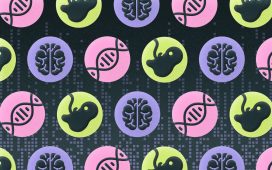Scientists have used living human brain tissue to mimic the early stages of Alzheimer’s disease, the most common form of dementia, in a breakthrough that will accelerate the hunt for a cure.
In a world first, a British team successfully exposed healthy brain tissue from living NHS patients to a toxic form of a protein linked to Alzheimer’s – taken from patients who died from the disease – to show how it damages connections between brain cells in real time.
The groundbreaking move offered a rare and powerful opportunity to see dementia developing in human brain cells. Experts said the new way of studying the disease could make it easier to test new drugs and boost the chances of finding ones that work.
Dementia presents a big threat to health and social care systems across the world. The number of people affected is forecast to triple to nearly 153 million by 2050, which underlines why finding new ways to study the disease and speed up the search for treatments is a health priority.
In the study, scientists and neurosurgeons in Edinburgh teamed up to show for the first time how a toxic form of a protein linked to Alzheimer’s, amyloid beta, can stick to and destroy vital connections between brain cells.
Tiny fragments of healthy brain tissue were collected from cancer patients while they were undergoing routine surgery to remove tumours at the Royal Infirmary of Edinburgh.
Scientists dressed in scrubs were stationed in operating theatres alongside surgical teams, ready to receive the healthy brain tissue, which would otherwise have been discarded.
Once the pieces of brain were retrieved, scientists put them in glass bottles filled with oxygenated artificial spinal fluid before jumping into taxis to transport the samples to their lab a few minutes away.
“We pretty much ran back to the lab,” said Dr Claire Durrant, a Race Against Dementia fellow and UK Dementia Research Institute emerging leader at the Centre for Discovery Brain Sciences at the University of Edinburgh.
There, samples were sliced into thin pieces, less than a third of a millimetre thick, and laid out in small dishes. Each piece of living brain tissue was kept in a nutrient-rich liquid, inside an incubator at 37C to mimic body temperature. “And then we start experiments almost straight away,” Durrant said.
Fragments of human brain were kept alive in dishes for up to a fortnight, with the patient’s permission.
Researchers extracted the toxic form of amyloid beta from people who died from Alzheimer’s disease and then applied it to the healthy living brain tissue in their dishes. “We’re trying to mimic Alzheimer’s disease,” said Durrant.
Unlike when exposed to a normal form of the protein, the brain did not attempt to repair damage caused by the toxic form of amyloid beta, her team found.
Even small changes in natural levels of amyloid beta – increasing or decreasing – were enough to disrupt brain cells. This suggests that the brain requires a finely tuned sweet spot of the protein to function properly, Durrant said.
“Working alongside the neurosurgical team at the University of Edinburgh, we have shown that living human brain slices can be used to explore fundamental questions relating to Alzheimer’s disease,” she said.
after newsletter promotion
“We believe this tool could help accelerate findings from the lab into patients, bringing us one step closer to a world free from the heartbreak of dementia.”
The breakthrough will enable scientists to home in on drugs with the best chance of preventing the loss of synapses – connections that allow the flow of messages between brain cells and are vital to healthy brain function. Alzheimer’s attacks synapses and their loss strongly predicts reduced memory and thinking abilities.
Durrant’s team also found that brain slices taken from the temporal lobe, a region known to be affected early in Alzheimer’s, released higher levels of tau, another key disease protein.
This may explain why this part of the brain is particularly vulnerable in early Alzheimer’s, as increased tau release may enable toxic forms of this protein to spread faster between cells.
The research was backed by Race Against Dementia, a charity formed by Sir Jackie Stewart after his wife’s dementia diagnosis, and a £1m donation from the James Dyson Foundation, a charity supporting medical research and engineering education.
Dyson said the breakthrough represented progress “towards solving one of the most devastating problems of our time”.
“Working with brain surgeons and their consenting patients to collect samples of living human brain and keep them alive in the lab is a groundbreaking method,” he said. “It allows researchers to better examine Alzheimer’s disease on real human brain cells rather than relying on animal substitutes, such as mice.”
Prof Tara Spires-Jones, group leader at the UK Dementia Research Institute, hailed the important development. Seeing early Alzheimer’s in real-time provided a new tool for scientists to better understand the disease and how to treat it, she said.
She said: “The use of living human tissue samples generously donated by people undergoing surgery to remove brain tumours allows scientists to probe how living human brain reacts to toxic proteins produced in Alzheimer’s, and in future will allow testing of whether new treatments are effective in human brain.”










